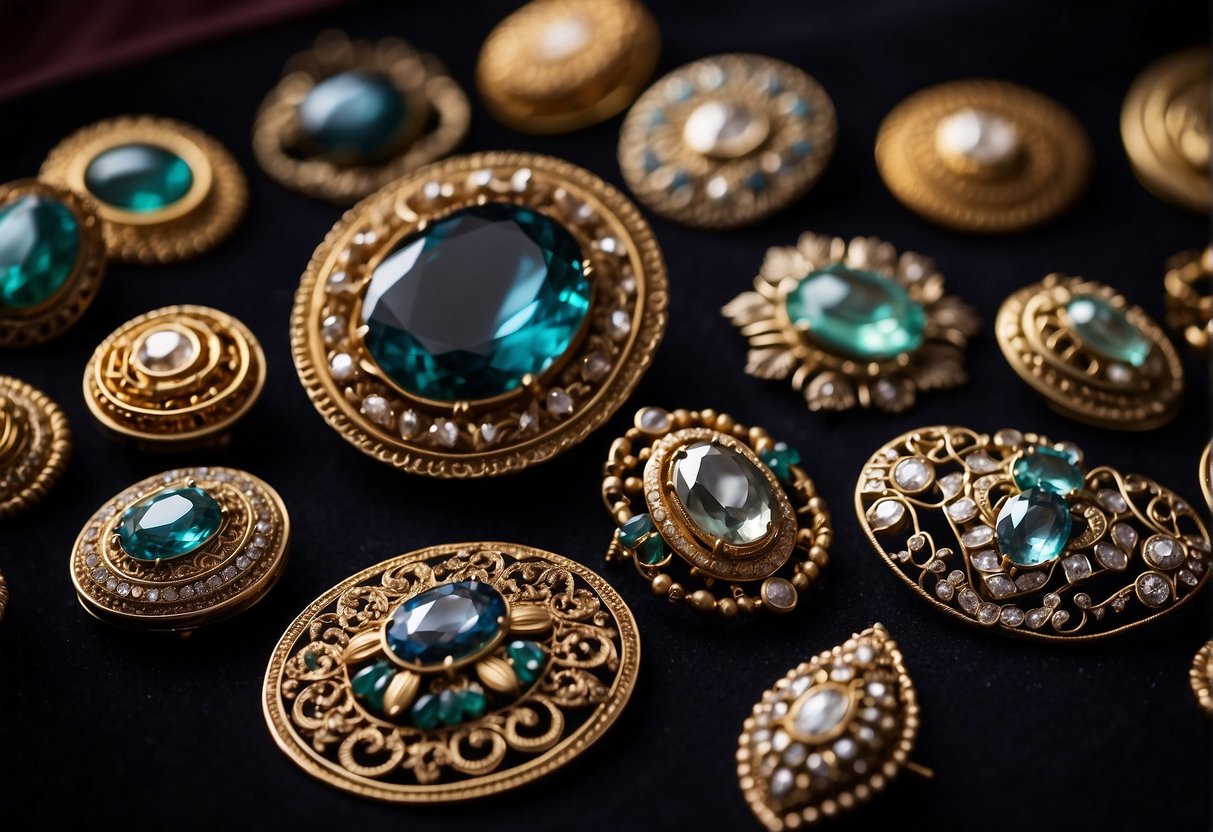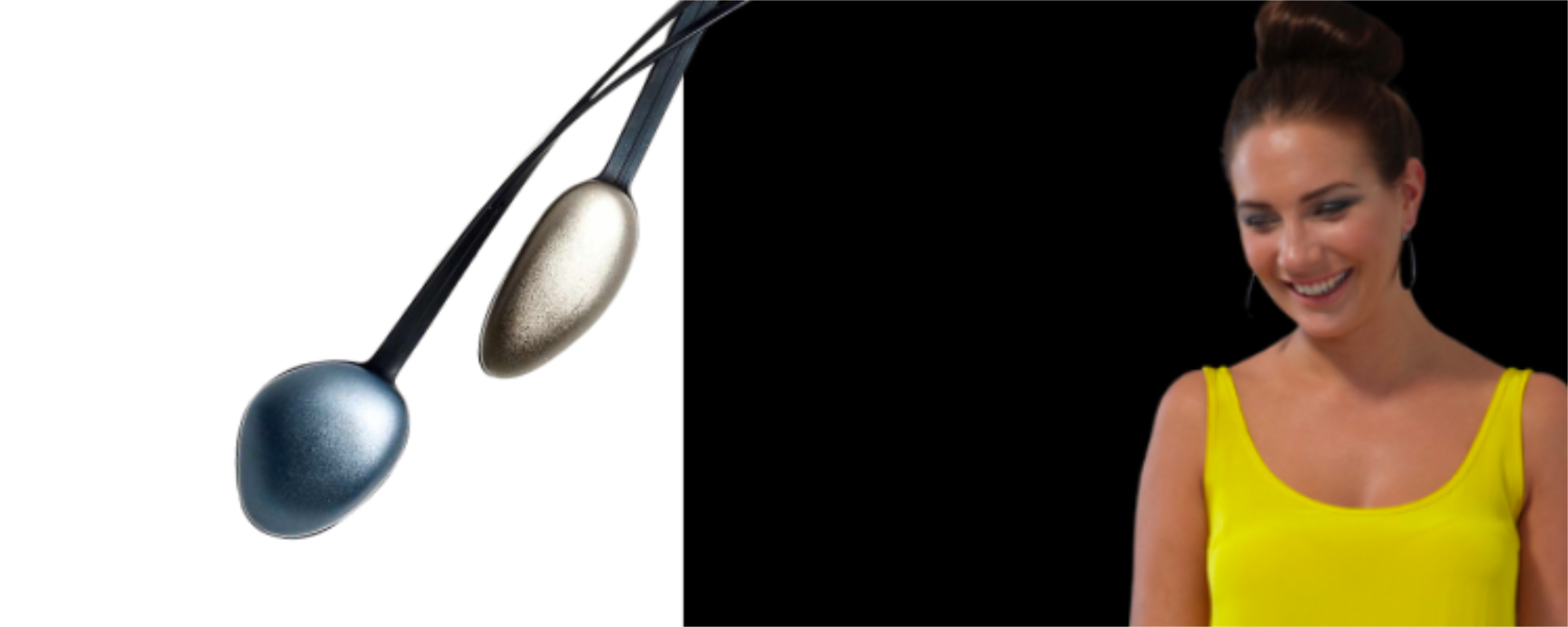Antique Brooches: A Timeless Addition to Your Collection
Understanding Antique Brooches

Defining Antique
Antique brooches are pieces of jewellery that have been created over 100 years ago. These brooches are often considered as valuable and are collected by many antique enthusiasts. Antique brooches are usually made of gold, silver, or other precious metals and may be adorned with gemstones, enamel, or other decorative elements.
Styles and Eras
Antique brooches come in a wide variety of styles and designs that reflect the fashion and culture of the era they were created in. Some popular antique brooch styles include Art Nouveau, Art Deco, Victorian, Georgian, and Edwardian. Each style has its unique characteristics, such as the intricate designs of the Art Nouveau era or the bold geometric shapes of the Art Deco period.
Identifying Hallmarks
Antique brooches often have hallmarks that can help identify the maker, year of manufacture, and the metal used. These hallmarks are usually stamped on the back of the brooch and can be in the form of letters, numbers, or symbols. It is essential to know how to read these hallmarks to determine the authenticity and value of the antique brooch.
When collecting antique brooches, it is essential to be knowledgeable about the different styles and eras to ensure that you are getting an authentic piece. Knowing how to identify hallmarks can also help you determine the value of the brooch. Antique brooches are a beautiful and valuable addition to any jewellery collection.
Materials and Craftsmanship

When it comes to antique brooches, the materials used and the craftsmanship involved are essential factors that determine their value and beauty. In this section, we will explore the different materials and techniques used in creating antique brooches.
Gold and Silver Brooches
Gold and silver are two of the most common materials used in creating antique brooches. Gold is a rare and precious metal that has been used in jewelry making for centuries. It is known for its durability, malleability, and resistance to tarnish. Silver, on the other hand, is a softer metal that is also highly valued for its beauty and versatility.
Antique gold and silver brooches were often crafted by skilled artisans who used various techniques such as filigree, chasing, and repousse to create intricate patterns and designs. These techniques involved shaping the metal by hammering and carving it into intricate shapes and patterns.
Enamelled Techniques
Enamelling is a technique that involves fusing powdered glass to a metal surface to create a colorful and durable finish. This technique was commonly used in antique brooches to add color and texture to the metal surface.
There are several types of enamelling techniques used in antique brooches, including cloisonne, champleve, and plique-a-jour. Cloisonne involves creating compartments or cells on the metal surface and filling them with enamel. Champleve involves carving out recesses on the metal surface and filling them with enamel. Plique-a-jour is a technique that involves creating a stained-glass effect by filling a metal frame with translucent enamel.
Pearls and Jewels
Pearls and jewels were also commonly used in antique brooches to add a touch of elegance and sophistication. Pearls are organic gems that are formed inside mollusks. They are highly valued for their beauty and rarity. Antique brooches often featured pearls as the centerpiece or as accents around the perimeter.
Jewels, on the other hand, were often used in antique brooches to add sparkle and brilliance. Diamonds, rubies, sapphires, and emeralds were all popular choices for antique brooches. These gems were often cut into intricate shapes and arranged in patterns to create a dazzling effect.
Collecting and Curating

If you're interested in antique brooches, collecting and curating them can be a fun and rewarding hobby. Whether you're looking to start a collection or acquire unique pieces as gifts, there are a few things to keep in mind.
Starting a Collection
When starting a brooch collection, it's important to have a clear idea of what you're looking for. Are you interested in a particular era or style of brooch? Do you want to focus on a specific material or type of design? Once you have a general idea, you can start researching and hunting for brooches that fit your criteria.
One way to start your collection is to attend antique fairs or visit antique shops. You can also search online for antique brooches and browse through the selection. When you find a brooch that catches your eye, make sure to examine it carefully and check for any damage or signs of wear.
Acquiring Unique Pieces
If you're looking for unique gift ideas, antique brooches can be a great choice. They're not only beautiful and timeless, but they also have a rich history and story behind them.
When acquiring antique brooches as gifts, it's important to consider the recipient's taste and style. Think about what type of brooch would suit their personality and wardrobe. You can also look for brooches with special features, such as intricate designs or rare materials.
To ensure that you're getting a quality piece, make sure to buy from reputable dealers or collectors. You can also ask for a certificate of authenticity to verify the brooch's age and provenance.
Overall, collecting and curating antique brooches can be a fascinating and enjoyable experience. With a little research and care, you can build a collection of unique and beautiful pieces that will last a lifetime.
Selling and Valuation

Antique brooches can be a valuable addition to any collection. If you have vintage brooches that you are considering selling, it is important to understand the process of valuation and selling to ensure that you get the best price possible.
Determining the Value
When it comes to valuing antique brooches, there are several factors to consider. The age, rarity, and condition of the brooch can all impact its value. Additionally, the materials used in the brooch, such as precious metals and gemstones, can also affect its worth.
One common method of valuation is to determine the brooch's retail replacement value. This is the amount that it would cost to replace the brooch with a similar item in a retail setting. However, this method may not accurately reflect the true value of the brooch, especially if it is a rare or unique piece.
Another approach is to consider the brooch's intrinsic value. This takes into account the materials used in the brooch, as well as any historical or cultural significance it may have. Intrinsic value can be more difficult to determine, but it can provide a more accurate representation of the brooch's worth.
Best Practices for Selling
When it comes to selling antique brooches, there are several best practices to keep in mind. First and foremost, it is important to work with a reputable dealer or appraiser who can provide an accurate valuation of your brooch. This can help ensure that you receive a fair price for your item.
In addition, it is important to properly market your brooch to potential buyers. This may involve creating a detailed listing that highlights the brooch's unique features and history. You may also want to consider showcasing the brooch at an antique fair or other event where potential buyers can see it in person.
Finally, it is important to be patient when selling antique brooches. These items may take longer to sell than more modern pieces, but with the right approach, you can find the right buyer who will appreciate the beauty and history of your vintage brooch.
Presentation and Gifting

When it comes to antique brooches, presentation and gifting can be just as important as the brooch itself. Antique brooches make great gifts for loved ones, especially those who appreciate unique and thoughtful gift ideas.
One way to present an antique brooch is to place it in a decorative box or pouch. This not only adds to the aesthetic value of the gift but also helps protect the brooch from damage. Consider adding a note or card with the brooch that explains its history or significance. This can make the gift even more special and personal.
Antique brooches can also be given as gifts for special occasions, such as birthdays, anniversaries, or weddings. For example, a brooch that features a birthstone or a symbol that is meaningful to the recipient can make a thoughtful and unique gift.
It's important to note that antique brooches can vary greatly in price and quality. Be sure to do your research and purchase from a reputable dealer to ensure that you are getting a genuine antique piece. Keep in mind that antique brooches may require special care and maintenance to keep them looking their best.
Frequently Asked Questions

What are the indicators of a brooch's value?
The value of an antique brooch can be determined by several factors, including its rarity, condition, age, and the materials used to create it. A brooch made with precious metals, gemstones, or intricate designs may be more valuable than a simpler piece. Additionally, the provenance of a brooch, or its history of ownership, can also impact its value.
How can one determine the age of a brooch?
Brooches can be dated by examining their style, materials, and construction. For example, a brooch with a simple design and a C-clasp closure may be from the early 19th century, while a brooch with a trombone clasp may be from the late 19th century. Additionally, the use of specific materials, such as Bakelite or celluloid, can also help to date a brooch.
What methods are used to date an antique brooch?
Several methods can be used to date an antique brooch, including carbon dating, thermoluminescence, and X-ray fluorescence. However, these methods are typically reserved for more valuable or rare pieces and may not be necessary for determining the age of a typical antique brooch.
What characteristics identify a brooch as Victorian?
Brooches from the Victorian era, which lasted from 1837 to 1901, are often characterized by their intricate designs and use of materials such as pearls, diamonds, and enamel. Additionally, Victorian brooches often feature naturalistic motifs, such as flowers and leaves, and may be set in yellow or rose gold.
Which features contribute to the rarity of a brooch?
Several factors can contribute to the rarity of an antique brooch, including its age, provenance, and the materials used to create it. Additionally, brooches with unique designs or those created by well-known artists may also be considered rare and valuable.
What should one look for when buying an antique brooch?
When purchasing an antique brooch, it is important to consider its condition, provenance, and authenticity. Additionally, buyers should examine the materials used to create the brooch, as well as its design and construction. It is also important to purchase from a reputable dealer or auction house to ensure the authenticity of the piece.




